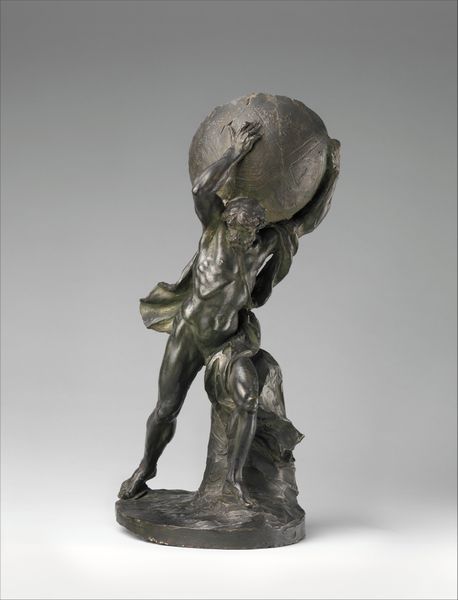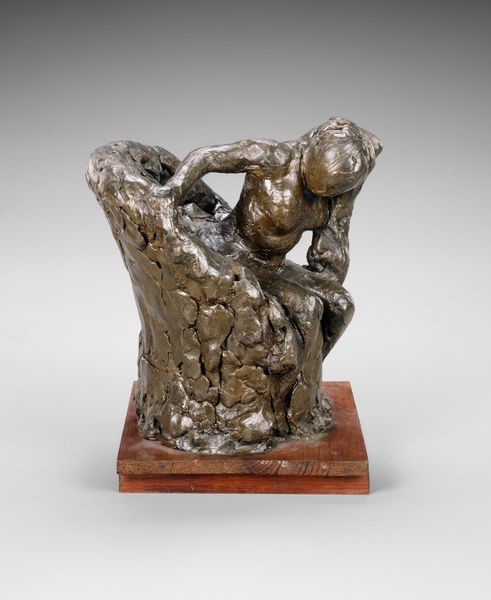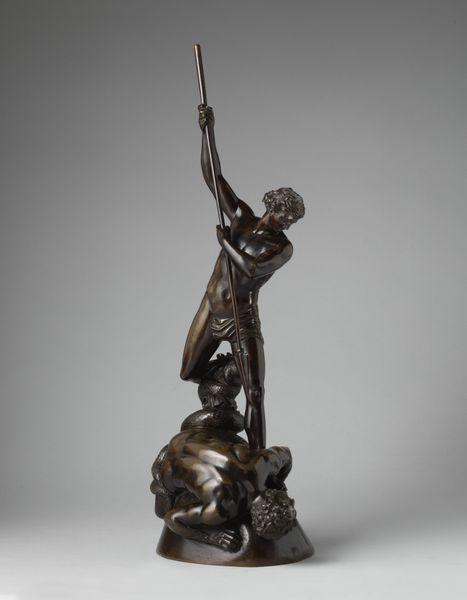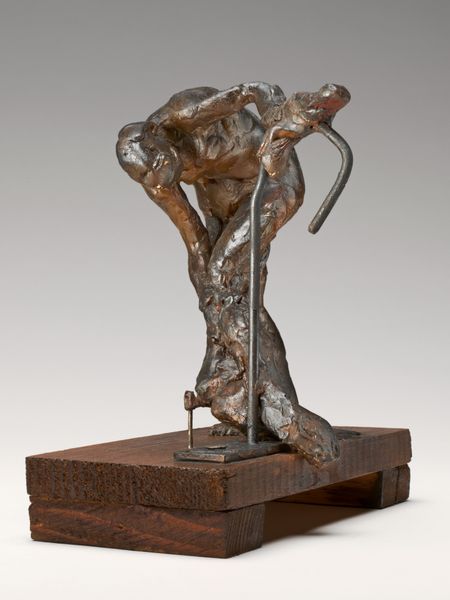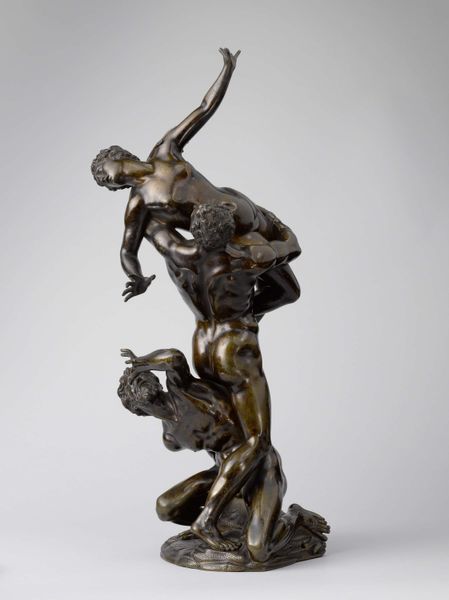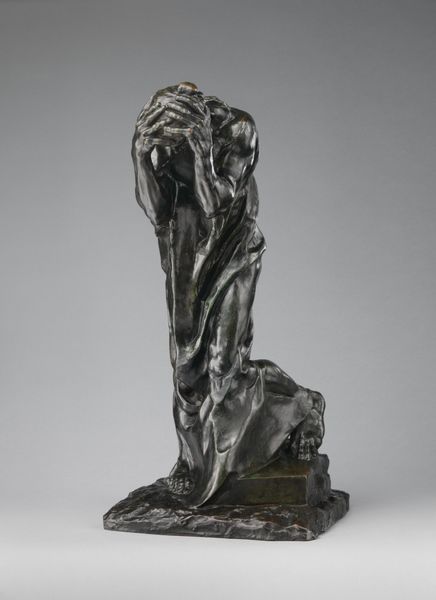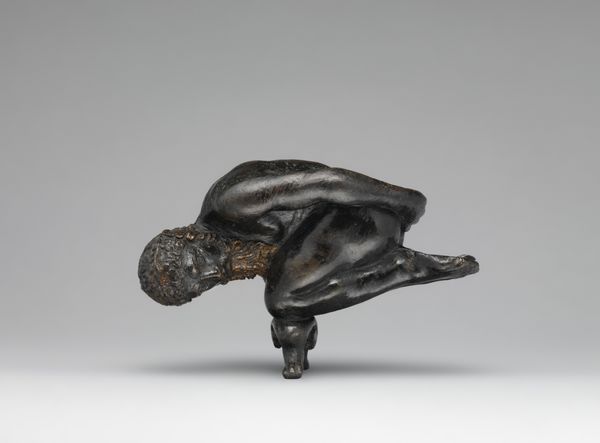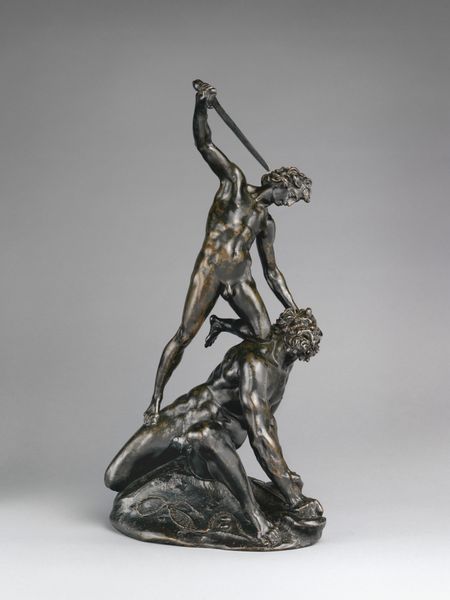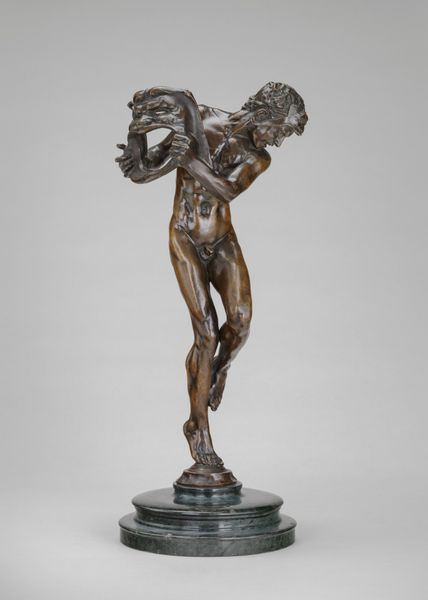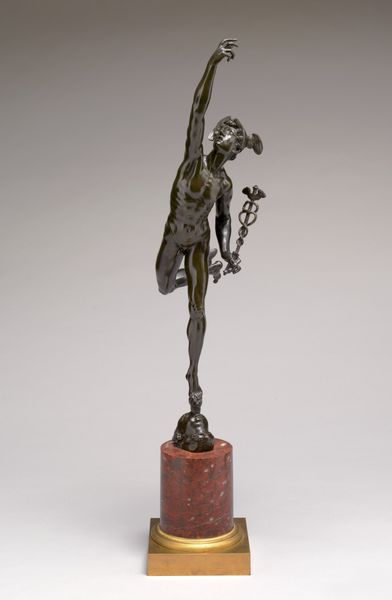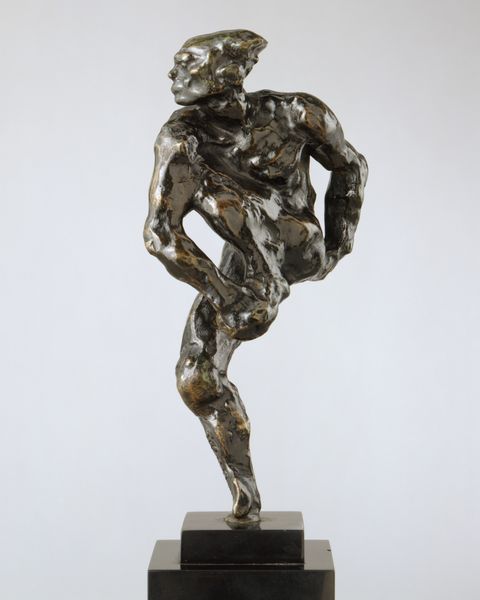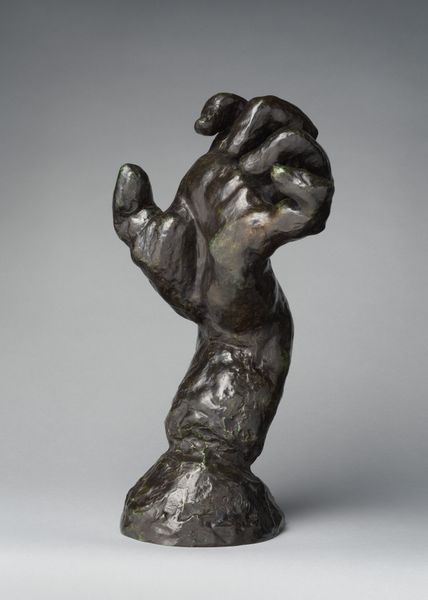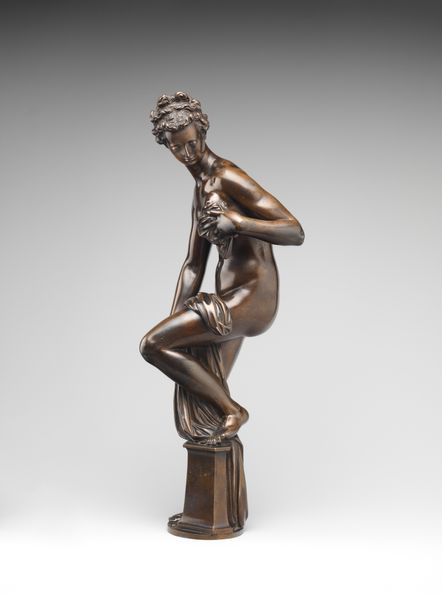
bronze, sculpture
#
sculpture
#
bronze
#
figuration
#
sculpture
#
symbolism
Dimensions: 22 1/4 x 21 1/4 x 13 1/2 in. (56.52 x 53.98 x 34.29 cm)
Copyright: Public Domain
Curator: Here we have "Charmed Circle of Youth," a bronze sculpture from around 1903 or 1904. It is located here at the Minneapolis Institute of Art. Editor: The pose, for starters! It’s like this dreamy winged figure has given up on flying. Just lounging there on this pedestal... gives me a wistful feeling, almost lazy, like a humid summer afternoon. Curator: Right, the artist, Esther Moore, really utilized the material. Bronze casting allowed her to capture both the languid, soft flesh and the almost industrial elements of the support structure itself, think about labor during this period! And it's presented as fine art. Editor: You see the social critique bubbling there, which I dig. For me, I keep circling back to the pose; it's so darn casual, like it’s daring us to take it too seriously. The texture on the wings alone! And how one leg just...dangles. Makes me think it should be perched by a fountain with moss growing over it. Curator: What's interesting about sculpture in this period, moving from the 19th into the 20th century, is its capacity for mass production and the tension with older ideas of uniqueness. Look at the labor investment, from initial mold-making to the final bronze pour, juxtaposed with a seemingly frivolous subject matter. Moore might have aimed to bridge accessibility and the exquisite, reaching many potential viewers through replicable sculpture. Editor: Mmm, I think this work makes the precious feel very approachable. The way the light glints off the bronze gives it this, like, ancient yet touchable vibe, and I just want to run my hands along the curve of those wings! You know, imperfections and all. But this accessible medium and image would, perhaps, not fully breach traditional gender or material norms within academic exhibition contexts at the time. Curator: An astute observation! Did this democratization risk challenging perceptions within academic sculpture contexts, as you stated? And by showcasing that democratization, did that then challenge power? Editor: Well, those questions alone offer a modern glimpse into how our readings and perceptions evolve. Curator: I completely agree; hopefully, listeners take on these thoughts as they circle and encounter new ideas, as well.
Comments
Join the conversation
Join millions of artists and users on Artera today and experience the ultimate creative platform.
